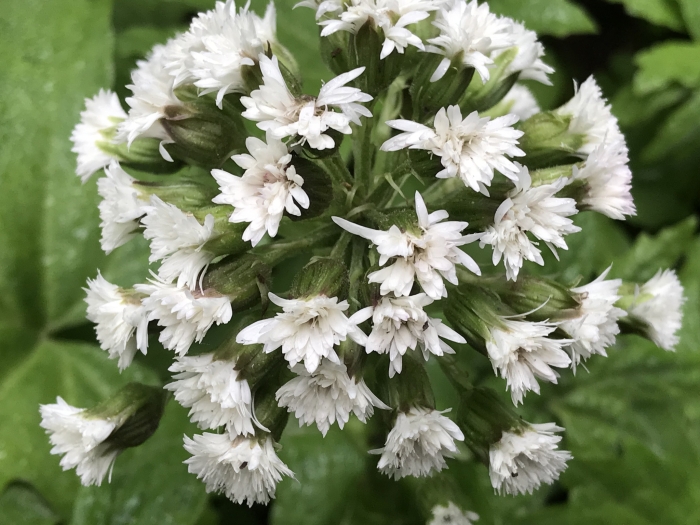Arctic Sweet Coltsfoot
(Petasites palmatus)
Arctic Sweet Coltsfoot (Petasites palmatus)
/
/

rappman
CC BY 4.0





















































Estimated Native Range
Summary
Arctic Sweet Coltsfoot is valued for its ability to thrive in wet conditions and is often used in rain gardens, bog gardens, and along water features. It is also appreciated for its large, bold foliage which adds a lush, tropical look to garden settings. In cultivation, it prefers partial shade to full sun, consistent moisture, and can tolerate a range of soil types provided they are kept moist. It is important to note that while it can be a vigorous grower, it should be planted with care as it can spread aggressively via rhizomes, potentially becoming invasive in ideal conditions. Gardeners should consider containment strategies or choose less aggressive species if this is a concern.CC BY-SA 4.0
Plant Description
- Plant Type: Herb
- Height: 0.5-2 feet
- Width: 1-3 feet
- Growth Rate: Rapid
- Flower Color: White
- Flowering Season: Spring
- Leaf Retention: Deciduous
Growth Requirements
- Sun: Full Sun
- Water: Medium, High
- Drainage: Slow, Medium
Common Uses
Edible*Disclaimer: Easyscape's listed plant edibility is for informational use. Always verify the safety and proper identification of any plant before consumption., Low Maintenance, Water Garden
Natural Habitat
Wetland margins, streambanks, and moist forested areas of Northern North America
Other Names
Common Names: Golden Palms Coltsfoot, Sweet Coltsfoot, Sweet Butterbur, Butterbur, Western Sweet-Coltsfoot, Arctic Sweet Coltsfoot, Western Sweet Coltsfoot, Arctic Sweet-Colt’s-Foot
Scientific Names: , Petasites palmatus, Petasites frigidus var. palmatus, Petasites frigidus subsp. palmatus, Nardosmia palmata, Petasites speciosus, Petasites frigidus subsp. arcticus, Petasites arcticus, Tussilago palmata, Nardosmia arctica
GBIF Accepted Name: Petasites frigidus var. palmatus (Aiton) Cronquist